Landlords continue to force tenants from their homes despite layers of eviction moratoria put in place during the COVID-19 pandemic. Previous analysis of the Social Policy Institute’s Socioeconomic Impacts of COVID-19 Survey found that Temporary Aid for Needy Families (TANF) recipients were evicted at higher rates than households not getting TANF, and new analysis finds similar trends for households receiving Supplemental Nutrition Assistance Program (SNAP) funds. Among non-SNAP recipients in our sample, 1.5% were evicted while 16% of tenants receiving SNAP were evicted—a significant discrepancy (Figure 1).
Figure 1. Evictions by SNAP Receipt
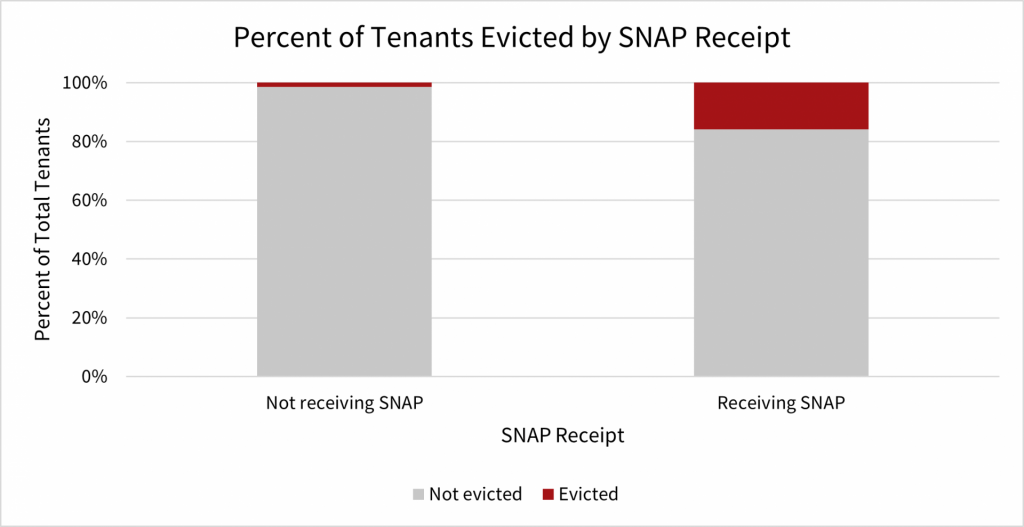
N=2,963
Just as with TANF recipients, this gap in evictions widened after focusing exclusively on tenants who were behind on their rent. In fact, SNAP recipients behind on rent experienced eviction at more than double the rate of non-SNAP recipients. Of the tenants who were behind on their rent, 15% of those not receiving SNAP were evicted as compared to 42% of those receiving SNAP (Figure 2). Additional analysis using a multi-level model reveals that SNAP recipients were evicted at higher rates even when accounting for differences in demographics, income, assets, recent job loss, and how many months behind they are on rental payments.
Figure 2. Evictions for Behind-on-Rent Tenants by SNAP Receipt
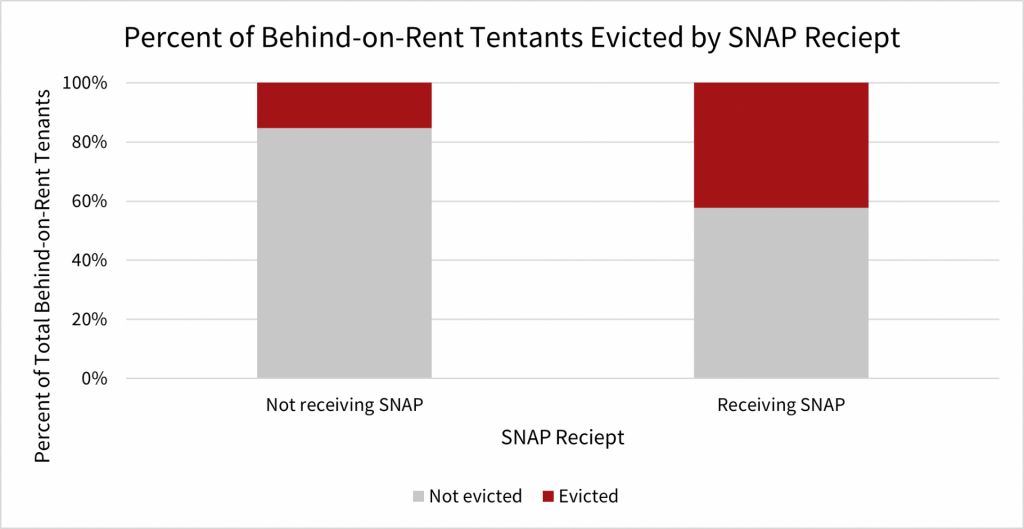
N=150
Additional analysis looked specifically at tenants with children to see how eviction patterns by SNAP receipt compared for these vulnerable households. Past research finds that tenants with children are at particular risk of eviction and, accordingly, we found that a significantly greater proportion of households with children were evicted — whether or not they received SNAP (Figure 3). Out of the total number of households with children, 4% were evicted while 1% of those without children were evicted.
Figure 3. Evictions by Presence of Children in the Household
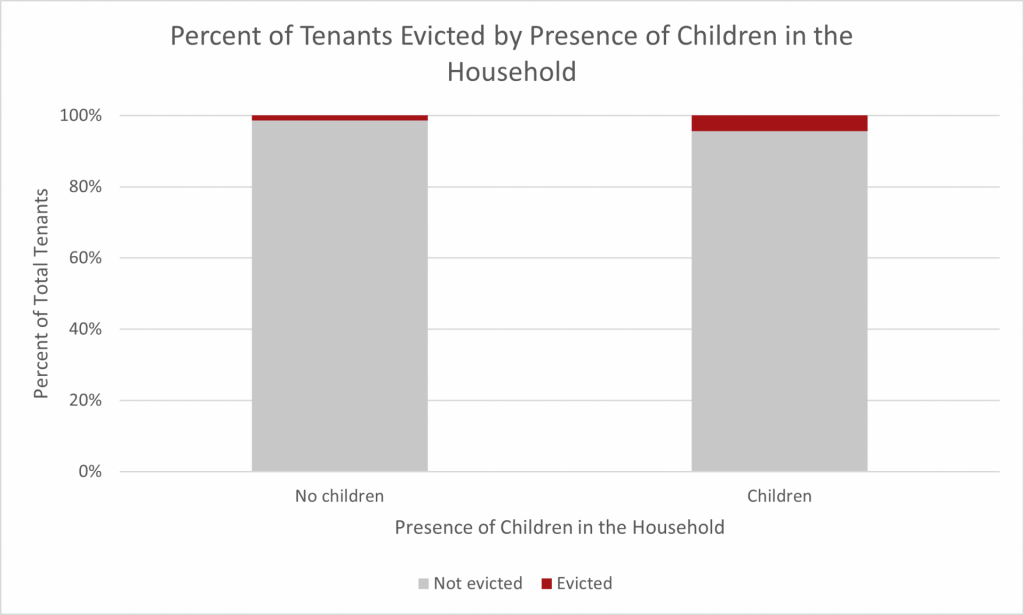
N=2,963
Not surprisingly, this disparity increases when we do account for households receiving SNAP benefits. Of the 586 renters with children in our sample, 3% of those not receiving SNAP were evicted as compared to 21% of those receiving SNAP benefits (Figure 4). When we narrow our focus to households with children that were behind on their rent, the difference widens, just as it did for all households receiving SNAP.
Figure 4. Evictions by Tenants with Children by SNAP Receipt
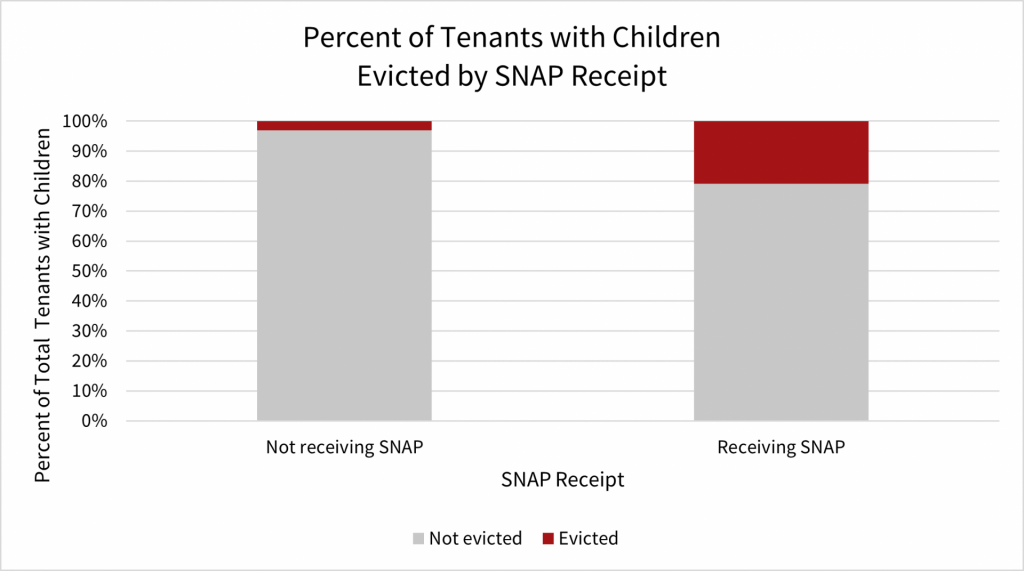
N=586
Unfortunately, results do not bode well upon further analysis of households with children. In fact, half of households with children that were behind-on-rent and received SNAP were evicted. In contrast, 12% of households with children that fell behind on rent and were not getting SNAP were forced out of their homes. (Figure 5).
Figure 5. Evictions for Behind-on-Rent Tenants with Children by SNAP Receipt
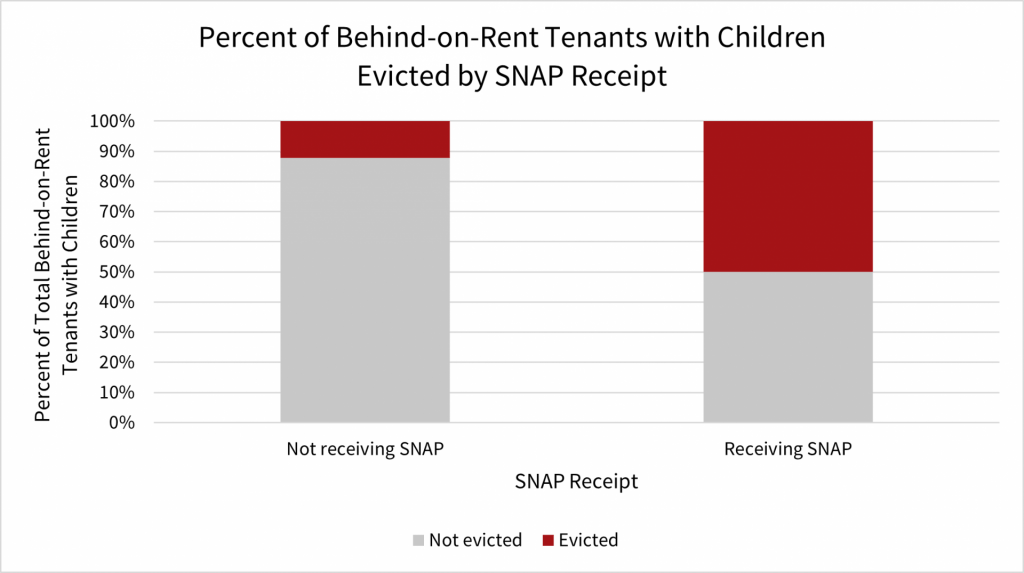
N=61
When taken in conjunction with SPI’s findings about the high rate of evictions among TANF recipients, these results demonstrate that increasing the amount of assistance TANF households receive is only an initial step towards stemming evictions. Within our sample 60% of respondents receiving TANF also reported receiving SNAP. This statistic means that if states expand TANF funds only to households already receiving TANF benefits, many others at disproportionate risk for eviction will be left behind. As the Center on Budget and Policy Priorities suggests, states can address this issue by providing cash payments to households receiving SNAP, particularly those with children.
All differences in eviction by SNAP receipt were significant at p<0.01.
Further analysis of the disproportionate evictions of SNAP recipients is forthcoming in a Social Policy Institute working paper.
Notes about eviction measurement:
To measure eviction, the survey posed the following questions:
- In the last three months, was anyone in your household forced to move by a landlord or bank when you did not want to?
- [If yes]: Why was your household forced to move?
- An eviction by a landlord
- Foreclosure by a bank or mortgage holder
- Some other reason (please specify)
Our outcome variable is dichotomous, divided into renters who did not say they experienced an eviction by a landlord and renters who said they did. We did not pose questions about the court proceedings of the eviction, so respondents who answered that they experienced “an eviction by a landlord” may or may not have had an eviction case brought against them and received a ruling for eviction. After an examination of responses for the “some other reason” option under the “why was your household forced to move” question, we did not include these individuals in our final group of those who were evicted. Many of the responses did not provide clear information about the nature of the move and others noted that they were forced to move by a university or by a roommate rather than a landlord.